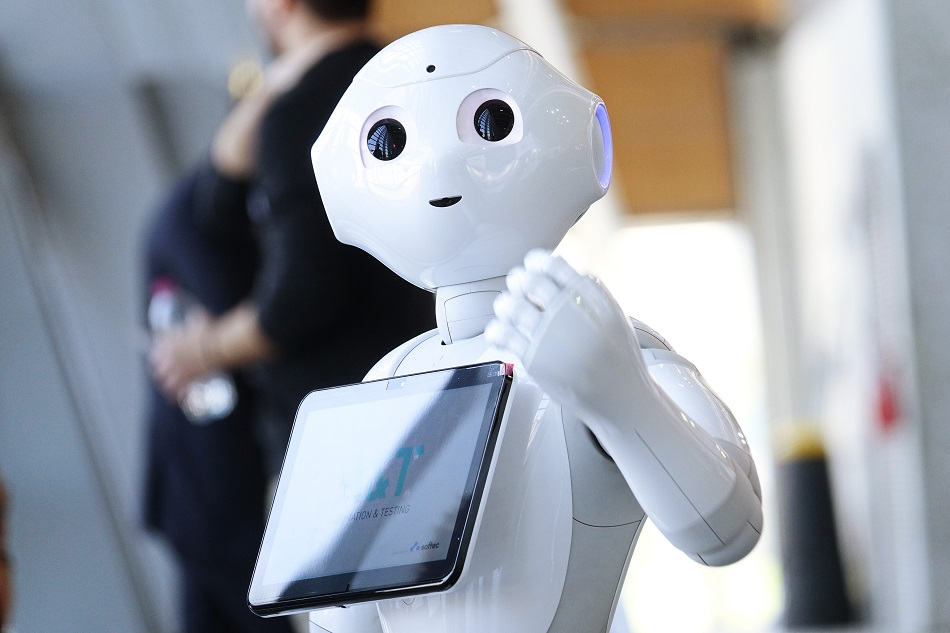
Image Credit: MikeDotta/Shutterstock.com
Developers have been working towards the objective of a fully functioning autonomous humanoid robot for many decades. Despite the complexity of this task, a humanoid robot offers many advantages in terms of the generalization of missions they could undertake that the development and lessons learned from the research make it a viable endeavor.
The ambition is that humanoid robots will be able to undertake long duration or dangerous missions. These could include search and rescue, security functions, repair, surveillance, and entertainment.
The Problem with Power
Power is the main problem at present. Robots that are tethered to a power supply lose most of their advantages and purpose.
One of the most advanced humanoid robots, Atlas by Boston Dynamics, is powered by a 3.7 kWh lithium-ion battery that lasts almost one hour if the machine is carrying out ‘mixed tasks’, including walking, climbing and using tools.
The current battery power supply technology limits walking and climbing robots from many of these missions. Internal combustion engines are characterized by high noise and emit toxic exhaust fumes. Rechargeable batteries have low energy densities and high rates of self-discharge.
Fuel Cell Technology in Robotics
In theory, fuel cells do not adopt the above limitations. Fuel cells use a well-established technology, which has been around since the early 19th century when Humphrey Davy demonstrated the principle, while later work by William Gove produced the first fuel cell.
Fuel cells incorporate a relatively simple technology. The first examples produced an electric current from an electrochemical reaction between hydrogen and oxygen over a platinum catalyst. Fuel cell technology has continued to develop incrementally since that time, with the military and NASA driving this research.
The polymer electrolyte membrane fuel cell (PEMFC) was first invented in the early 1960s by General Electric for NASA to provide power for extended missions to space. It was used in early Gemini missions and in the Space Shuttle.
Polymer electrolyte membrane fuel cells (PEMFC), sometimes called proton exchange membrane fuel cells (PEMFC), use polymer electrolyte membranes (PEMs), such as Nafion (a synthetic polymer with ionic properties), to move protons for ion-exchange purposes.
PEMFC consumes mainly hydrogen, methanol, or ethanol. During operation, the ‘fuel’ in the anode chamber is oxidized while the oxygen in the cathode chamber is reduced.
Proton exchange membranes (PEMs) can provide very high energy densities, are clean and quiet, and unlike batteries, they do not become heavier in relation to their power output.
At higher power ranges, a hydrogen fuel cell can store as much as 236 times more energy per kilogram than a lithium-ion battery. The latest models are even more efficient, as well as less temperature-sensitive and can be refueled in minutes.
With emerging technologies that promise the production of hydrogen from non-fossil fuel sources and the use of cheaper alternatives such as methane for fuel, some of the issues with fuel cells are resolving. It may be fair to conclude that they might be the ideal power solution for humanoid robots. However, there are some disadvantages to PEM. Fuel cells can be unreliable due to performance degradation and they are not as physically robust as batteries.
Using Hybrid Fuel Cells for Humanoid Robots
The battery or fuel cell debate still continues in the automotive industries but researchers have shown that using a hybrid fuel cell and battery power sources gives the best of both worlds, particularly for humanoid robots.
The combination of the two technologies offers the advantage of long renewable fuel cell power from autonomous filling stations with the instant high-power capability that a humanoid robot will need in short bursts from the battery. The fuel cell can even charge the battery during times of inactivity.
Hydrogen is not the only fuel that can be used in fuel cells. An innovation that is of huge significance to robot power is the work being undertaken in the development of microbial fuel cells.
The possibility of a self-sustaining humanoid robot using a microbial fuel cell that can be powered by scavenging organic material is not far away. EcoBot-III is a small lab-based robot that does not look like a humanoid robot but it does function like a humanoid in one important aspect.
EcoBot-III collects its own food and water from the environment. It performs the task we design it to do, and at the end of the day, it gets rid of its own waste.
Ioannis Ieropoulos, Roboticist, Bristol Robotics Laboratory (BRL)
Sources and Further Reading
Disclaimer: The views expressed here are those of the author expressed in their private capacity and do not necessarily represent the views of AZoM.com Limited T/A AZoNetwork the owner and operator of this website. This disclaimer forms part of the Terms and conditions of use of this website.